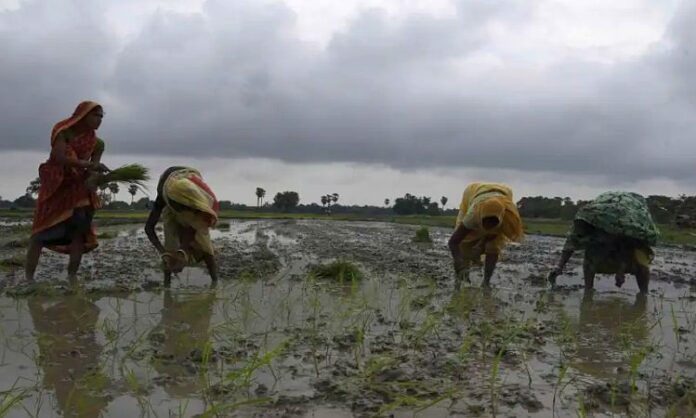Patna: With monsoon rains playing hide and seek, farmers in various parts of the state are seeing at the sky with a sense of despondency. For, they are facing immense hardship to transplant paddy this kharif season. No wonder that the state has only 55% coverage of paddy against the gross sown area of 33 lakh hectare.
As per the agriculture department’s statistics, there was around 37% deficiency of rains between June 1 and July 31 in the state than the normal precipitation. Rainfall deficiency is more pronounced in June, which received 52% rain lesser than the normal. June month is crucial for sowing paddy seeds.
Also Read: Bihar estimates paddy coverage on 36.54 lakh ha this kharif season
Only Kishanganj out of 38 districts received 17% access rains, while the rest of the districts had deficient rains up to 60%. Samastipur had 60% less rains during June and July this year, while Saran and Saharsa got 59% and 58% lesser rains. Districts known as rice bowl like Rohtas and Kaimur faced rain deficiency of 52%, while Bhojpur witnessed 44% less rains.
Officials of the department said that paddy coverage in Kishanganj, Araria, Katihar, West Champaran and Sheohar is more than 90%, while districts of Munger and Magadh divisions have paddy transplant on around 12-40%. Farmers blessed with irrigation network like Gaya, Saharsa, Supaul and East Champaran have paddy coverage of around 85-90%.
Also Read: Green energy to power dedicated agriculture feeders in Bihar
An agriculture expert of the department, who did not wish to be quoted, said that paddy productivity would suffer if it did not rain adequately in the next couple of weeks. “Productivity of rice was highest in 2023-24, even though the state suffered rain deficiency thanks to technological intervention and use of hybrid seeds. This year, we are expecting paddy production to be around 140 lakh metric tonne,” he added.
Department officials are also worried at prevalence of high temperature in several districts, which, according to them, might affect crop productivity. “Farmers need to water paddy farmers more frequently if it did not rain sufficiently due to high temperature. Some part of Sitamarhi witnessed maximum temperature hovering around 40 degree C. Maximum temperature in many districts has been recorded in the range of 36-39 degree C, which is not good this time around,” said an officer.
Also Read: Post 3rd estimate, India set foodgrain target to 332MT this season
Agriculture department secretary Sanjay Kumar Agarwal recently held a meeting of senior officers of the agriculture directorate and asked them to encourage farmers to look for alternative crops in view of shortage of rains. The directorate has been told to arrange sufficient quantity of climate resilient seed of paddy and seeds of millets.




